Photographs on tree-rodent interactions
in
Kanumazawa Riparian Forest, northern Japan
Update: December 25, 2003
A. Forest and trees (11 photos)
B. Seeds and seed dispersal (5 photos)
C. Seedlings (7 photos)
D. Rodents (7 photos)
E. Rodents and beech mast in Nukumi-daira (6 photos; different, tentative page)
A. Forest and trees.
A1) overview of Kanumazawa Riparian Forest, Iwate prefecture
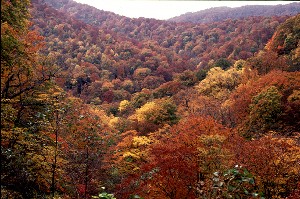
A2) Kanumazawa Riparian Research Forest
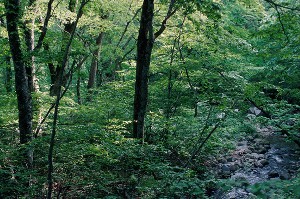
A3) Kanumazawa Forest in early spring
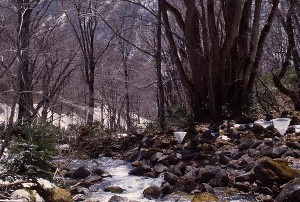
A4) Flowering population of Aesculus turbinata in early June
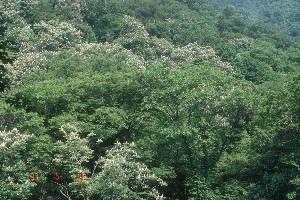
A5) same A. turbinata population
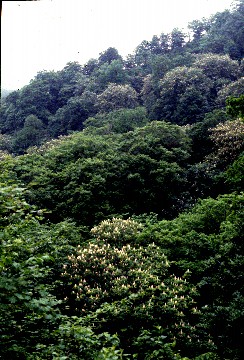
A6) a big A. turbianta tree with K. Hoshizaki
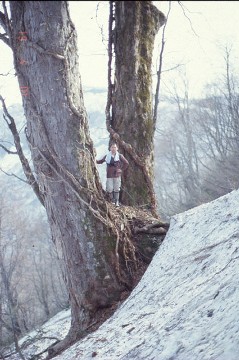
A7) Cercidiphyllum japonicum : a huge, wind-dispersed tree with many stools
and with K. Hoshizaki and a student
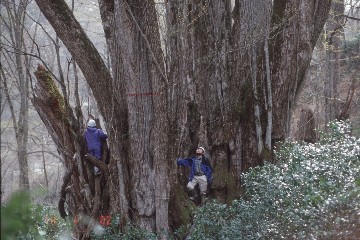
A8) C. japonicum with colleagus
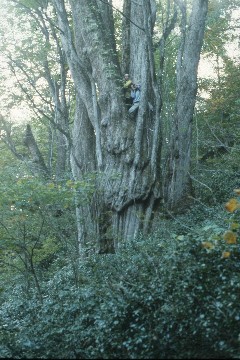
A9) C. japonicum huge individual tree with many stools and with K. Hoshizaki
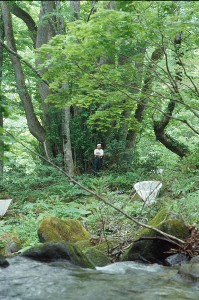
A10) Acer mono (yellowed leaves) and Cecidiphyllum japonicum (a big tree)
in autumn
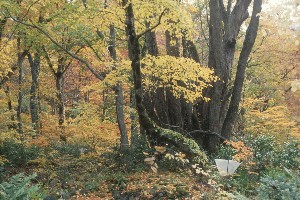
A11) The core-research plot (1 ha), with regularly spaced seed-traps
to monitor seedfall densities of major tree species.
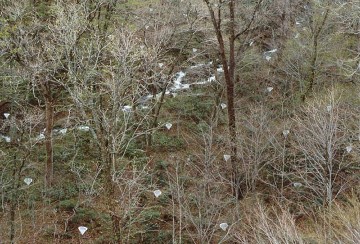
B. Seeds and seed dispersal.
B1) variation in seed size :
Aesculus turbinata (bottom left), Fagus crenata and Quercus crispula (right)
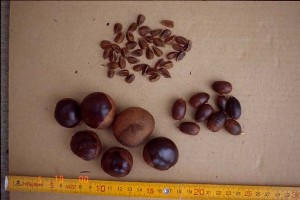
B2) a large A. turbinata fruit (seed(s) and husks)
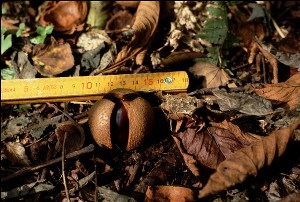
B3) Tracking movement of Aesculus seeds using wire-thread (Hoshizaki and Hulme, 2002)

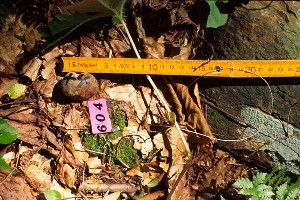
B4) an Aesculus seed gnawn by rodents
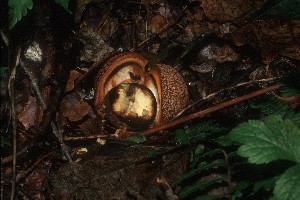
B5) Detection of a seedling's parent using seed-mark with ink (Hoshizaki et al., 1999)
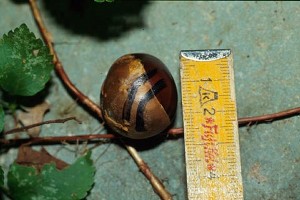
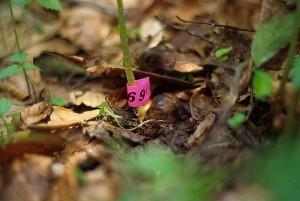
C. Seedlings.
C1) Aesculus turbinata seedlings from a cache (Hoshizaki et al., 1997)
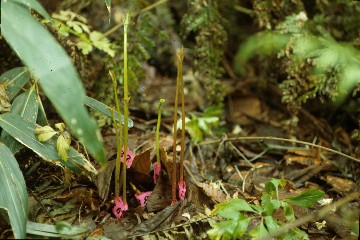
C2) A. turbinata seedlings originated from larderhoarded seeds
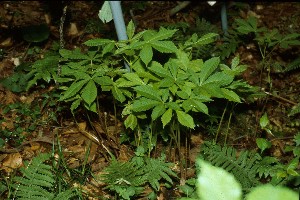
C3) Cotyledonal reserves in A. turbinata seedlings,
3- and 5-wk after the emergence (Hoshizaki et al., 1997)
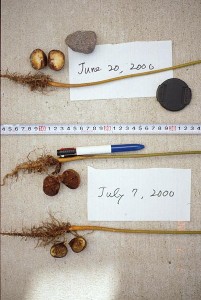
C4) A. turbianta seedlings whose shoot clipped
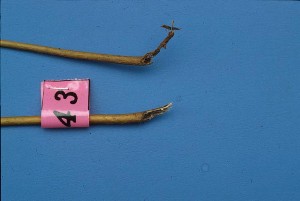
C5) Resprouting A. turbinata seedling after rodent's clipping
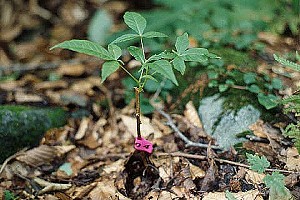
C6) Callus being produced after shoot clipping
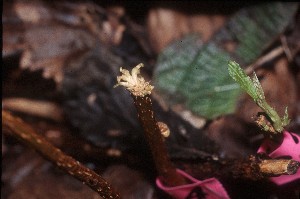
C7) a resprouted A. turbinata seedling, established from callus
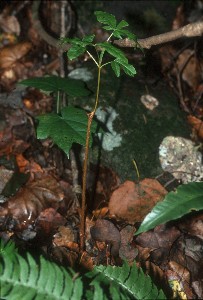
D. Rodents.
D1) Apodemus speciosus : the main seed-disperser/predator of Aesculus turbintata
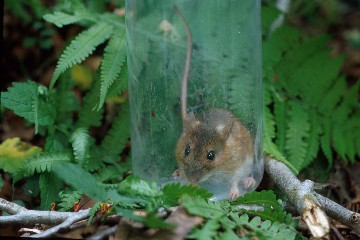
D2) Eothenomys andersoni juvenile eating Aesculus seedlinlgs
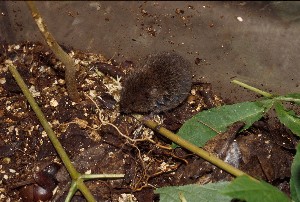
D3) A. speciosus attracted to a pile of Aesculus seeds
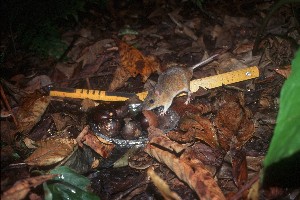
D4) A. speciosus transporting an Aesculus seed
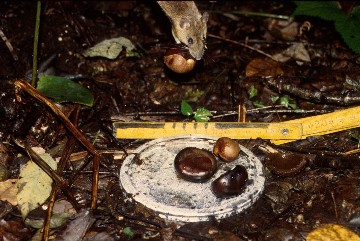
D5) A. speciosus excavating hypogeal cotyledon
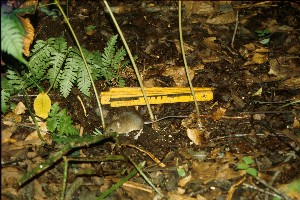
D6) A. speciosus yielding hypogeal cotyledons
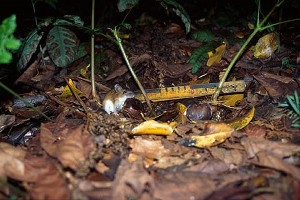
D7) A. argenteus : a species with least body weight in temperate forests in Japan.
(This species do not interact with Aesclus turbinata.)
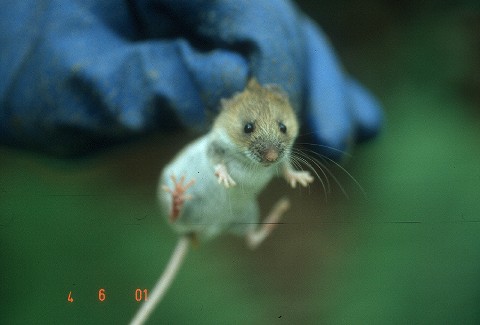
E. Rodents and beech mast in Nukumi-daira.
See the page-top.
Back to the page top.
Back to the Hoshi's top-page.































